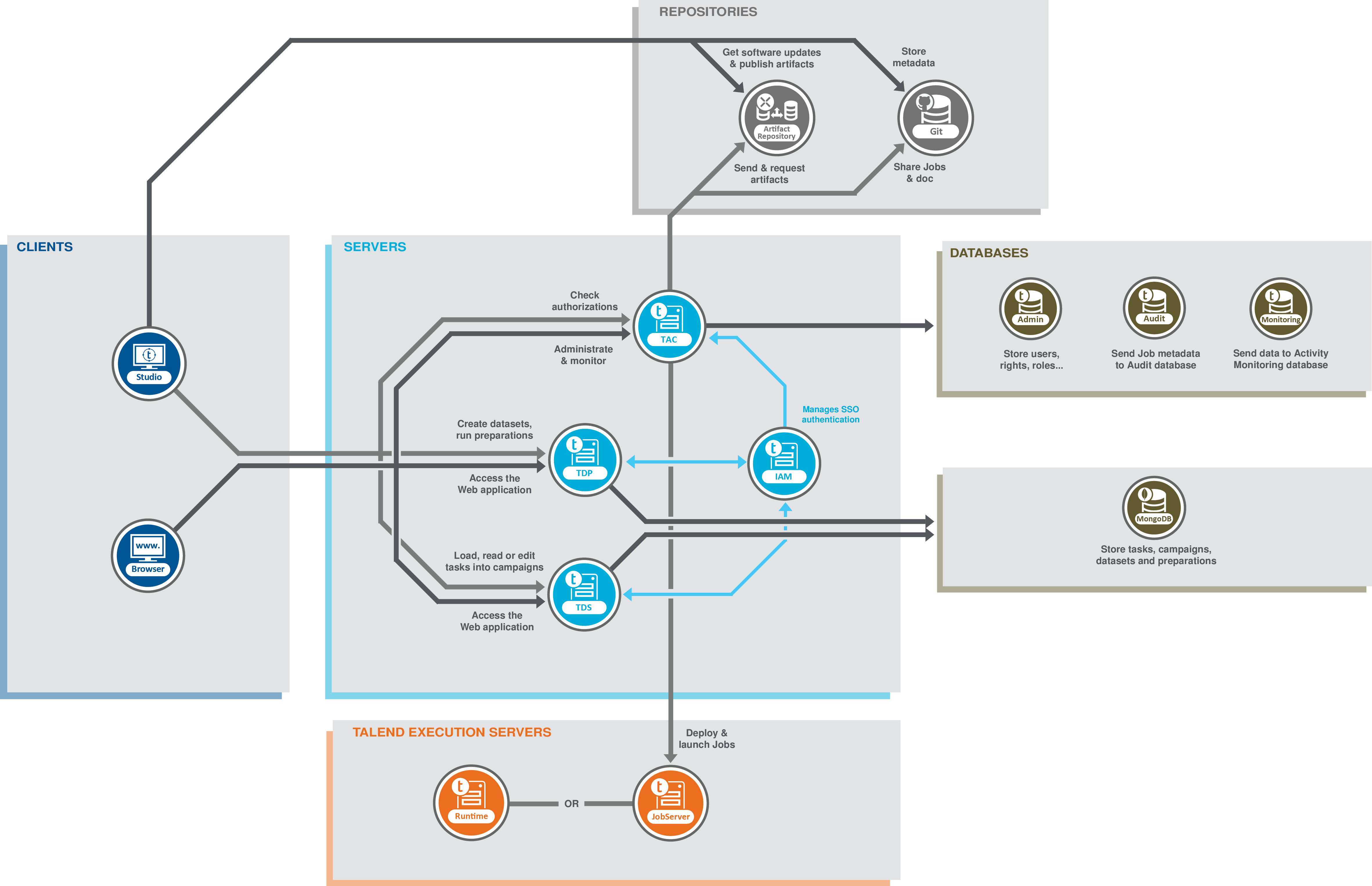Functional architecture of Talend Data Integration
The Talend Data Integration functional architecture is an architectural model that identifies Talend Data Integration functions, interactions and corresponding IT needs. The overall architecture has been described by isolating specific functionalities in functional blocks.
The following chart illustrates the main architectural functional blocks.

The different types of functional blocks are:
- The Clients block includes one or more Talend Studio
instances and Web browsers that could be on the same or on different machines.
From Talend Studio, you can carry out data integration processes regardless of the level of data volumes and process complexity. Talend Studio allows you to work on any project for which you have authorization.
From the Web browser, you connect to:
- the remotely based Talend Administration Center through a secured HTTP protocol.
-
the Talend Data Preparation Web application, where you import your data, from local files or other sources, and cleanse or enrich it by creating new preparations on this data
-
the Talend Data Stewardship Web application, where campaign owners and data stewards manage campaigns and tasks
- The Server block includes:
- a web-based application server, Talend Administration Center,
which enables the management and administration of all projects:
- administration metadata (user accounts, access rights and project authorization for example) is stored in the Administration database.
- data of project items (Jobs and Routines for example) is stored in the Git server.
-
servers used by the Talend Web applications, namely Talend Data Preparation, Talend Data Stewardship, and the Talend Identity and Access Management server which is used to enable Single Sign-On between those applications.
- a web-based application server, Talend Administration Center,
which enables the management and administration of all projects:
- The Repositories block includes the Git server and the Nexus
repository.
The Git server is used to centralize all project items like Jobs shared between different end-users, and is accessible from the Talend Studio to develop project items and from Talend Administration Center to publish, deploy and monitor the project items.
The Nexus repository is used to store:- Software Updates available for download,
- Jobs that are published from the Talend Studio and are ready to be deployed and executed.
- The Talend Execution Servers block includes one or more execution servers, deployed inside your information system. Talend Jobs are deployed to the Job servers through the Administration Center's Job Conductor to be executed on a scheduled time, date, or event.
- The Databases block includes the Administration, the Audit and
the Monitoring databases.
The Administration database is used to manage user accounts, access rights and project authorization, and so on.
The Audit database is used to evaluate different aspects of the Jobs implemented in projects developed in Talend Studio with the aim of providing solid quantitative and qualitative factors for process-oriented decision support.
The Monitoring database is used to monitor service calls.
Did this page help you?
If you find any issues with this page or its content – a typo, a missing step, or a technical error – let us know how we can improve!
